By Nicholas Ibekwe
"Onye wetara oji, wetara ndu" (He who brings kolanut brings life) said Ray Anumba, the public relations officer of the Mbari Cultural Centre in Owerri, as he broke the customary kolanut -a symbol of welcome and acceptance among the Igbos. Saying a brief prayer, he called on Chineke (God) to bless our mission at the centre.
The Mbari Cultural Centre is where cultural heritage meets entertainment -one of the must-see sites in Imo State. It provides a connection, an attempt at bridging the gap between two civilisations - the old and the new.
Perhaps the best way to describe the Mbari centre is to compare it with the effect derived from watching a celluloid movie on a digital technology. It is both a space where one communes with the ancestors and a haven of relaxation.
The Mbari house
The Mbari House is a reflection of the people's mode of worship, fears, superstitions, conquests, and prejudices. Centrally located within the complex, the Mbari House is an imposing open-air museum that serves as the focal point of the Cultural Centre.
According to my guide, Mr. Anumba, the mbari Houses are very popular in Owerri-Igbo, and other parts of Igboland. Whatever god a particular mbari house is dedicated to, takes the central position. Accordingly, the cultural centre's own mbari house is dedicated to Chukwu Abiama (the supreme deity in Igbo mythology), and so the image forms the central focus inside the structure.
"The Mbari is the Igbo traditional form of arts, normally conducted to appease the gods in a particular situation," Anumba said. "Maybe there is an epidemic or something the community wants to achieve, they will erect an mbari house to appease the (relevant) god."
Apart from being a shrine, a typical Mbari house provides a record of the people and their history. "One thing about the Mbari house is that, once done, it tells the story of the people's lives, their culture and the deities that have effect in their lives," Mr. Anumba explained.
The image of the Chukwu Abiama in the cultural centre's mbari house is inscribed with Nsibidi script, the sacred writing of the Igbo people. Also written on the image, are the four market days of the Igbos: Eke, Ovie, Afor and Nkwo.
The following are also on display: sculptures depicting Nworie, a river goddess; eke-Nworie, a sacred python -totem of the goddess; Amadioha, the god of lightning and thunder; as well as lesser deities and spirits like Agbara, Mbataku, Ofor, Umune and Agwo (spirit of mischief).
Other artworks include the ikoro, a medium of communication; and Onye afotoro (showing someone that died of a swollen stomach, considered a bad omen). Unusual sightings and creatures are also commemorated -like the Eyi Nnunu (ostrich) and alakuku the giant (called Nwokoro Uku in some parts).
The arrival of the colonialists changed traditional Igbo society forever. The Igbo refer to the white colonials as human gods who took over and changed their society and put a new order in place. Hardly surprising, therefore, that depictions of the colonial administration and its officers are to be found in some mbari houses.
Among these sculptural studies of colonial administrators, are: Nwa Disi -a corruption of District Commissioner (DC); Ndi No Na Ilo Ikpe (people in the court); and Ndi No Na Gba (prisoners).
The Mbari Museum kitchen
The Mbari Museum Kitchen is the relaxation spot within the centre; and appeals to the taste buds with a selection of Igbo traditional cuisine. Established in 2003, the museum kitchen is a popular night spot; visitors are entertained with highlife music by the Omenimo Band.
The Mbari Museum kitchen is actively engaged in research studies to discover and showcase new ways of preparing and serving Igbo dishes. It recently hosted a food exhibition during which it was discovered that there are about 12 types of soups eaten by the Imo people.
The American ambassador to Nigeria, Robin Sanders, was hosted to a feast of traditional dishes at the Mbari Museum Kitchen during her visit to Imo State.
The Mbari Amphitheatre
The amphitheatre attached to the Mbari Cultural Centre is located at the extreme of the premises. Currently undergoing refurbishment that will transform it from an open-air amphitheatre to an all-season, covered amphitheatre, it promises to be a visitor's delight when completed.
With a seating capacity of 3,000, the amphitheatre, comes with an ultra-modern hall to be used for arts exhibitions.
According to Mr. Anumba, discussions are ongoing with the US embassy to build an ICT centre to assist artists and cultural researchers in executing their projects and field studies. It would also help to connect artists the world over.
Incorporated into the refurbished design of the amphitheatre is an orchestra pit for performing musicians.
Behind the amphitheatre is a botanical garden whose goal is to salvage trees and plants indigenous to the region. Some of the trees in the garden - like the Ukwa (breadfruit), Ugiri and Ogbono - are endangered species. Therefore, the Mbari Cultural Centre looks to a sustainable future even as it celebrates the Igbo past.
Subscribe to:
Post Comments (Atom)

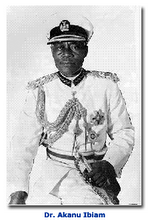
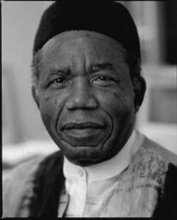


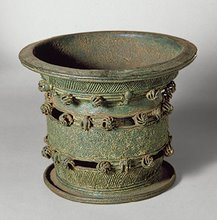
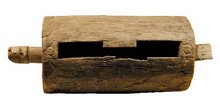
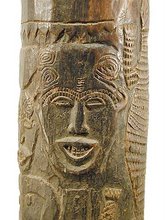
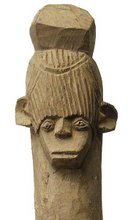
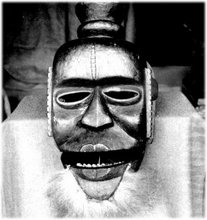

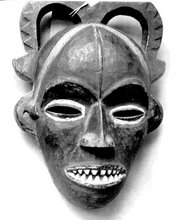
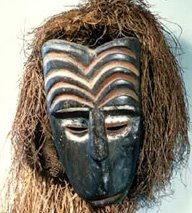
No comments:
Post a Comment